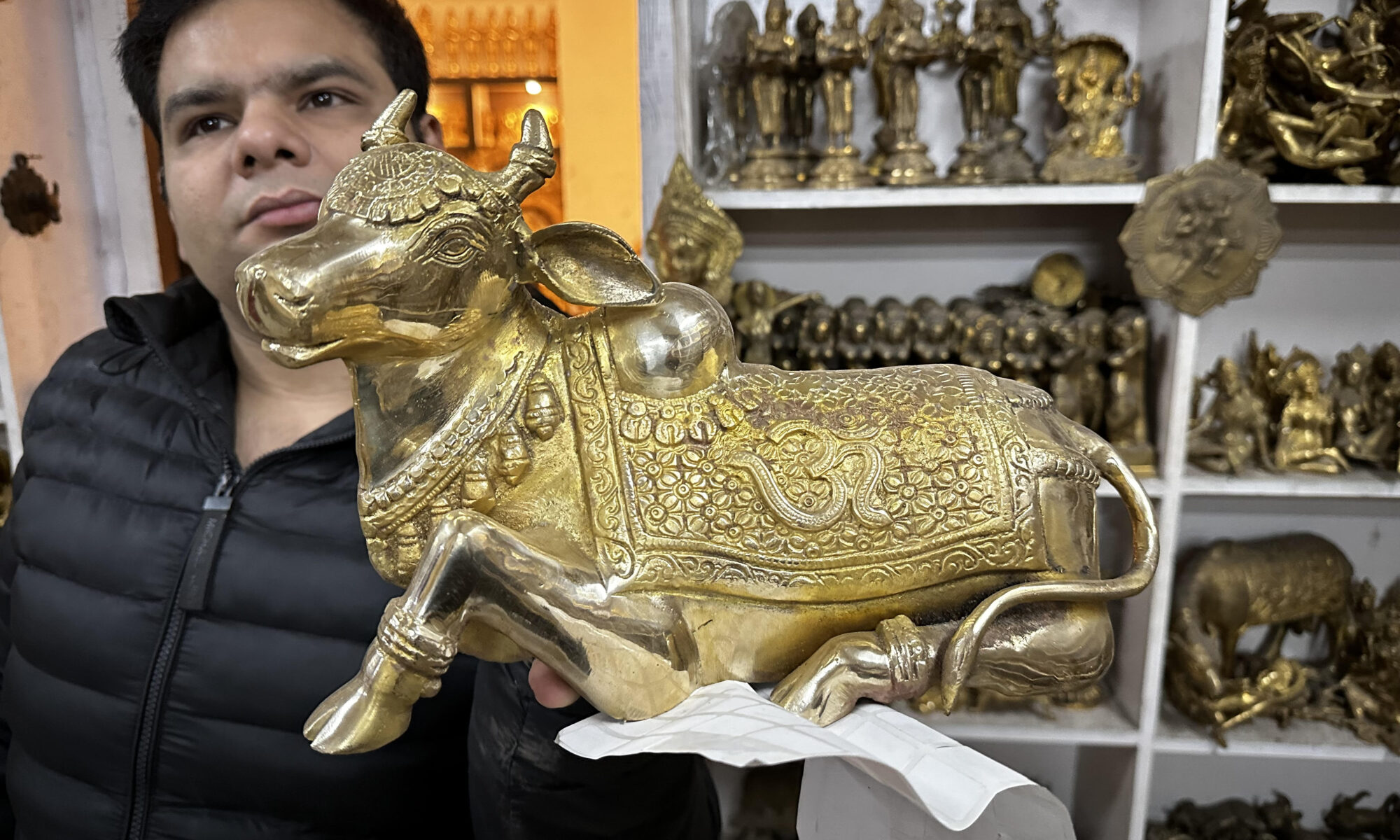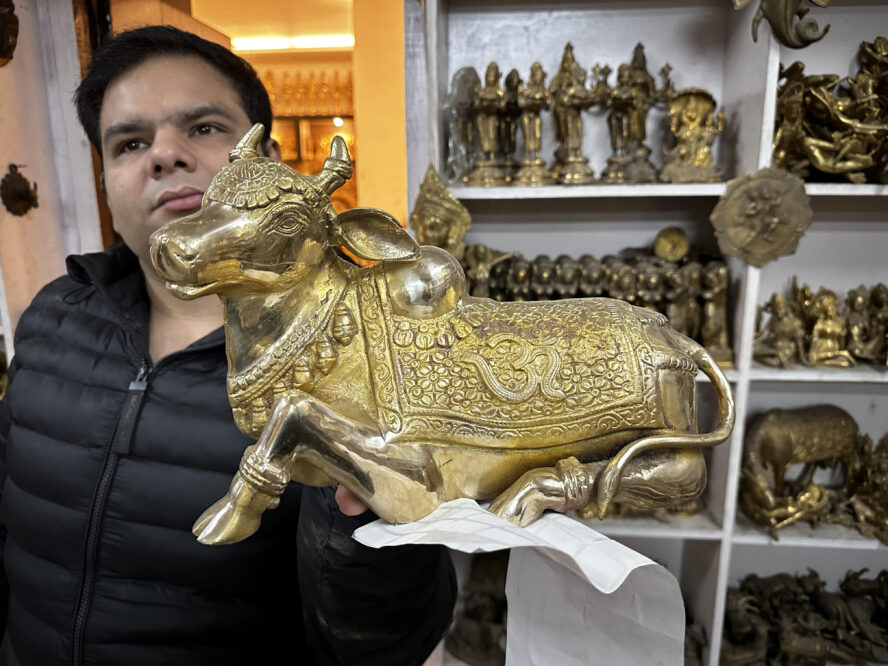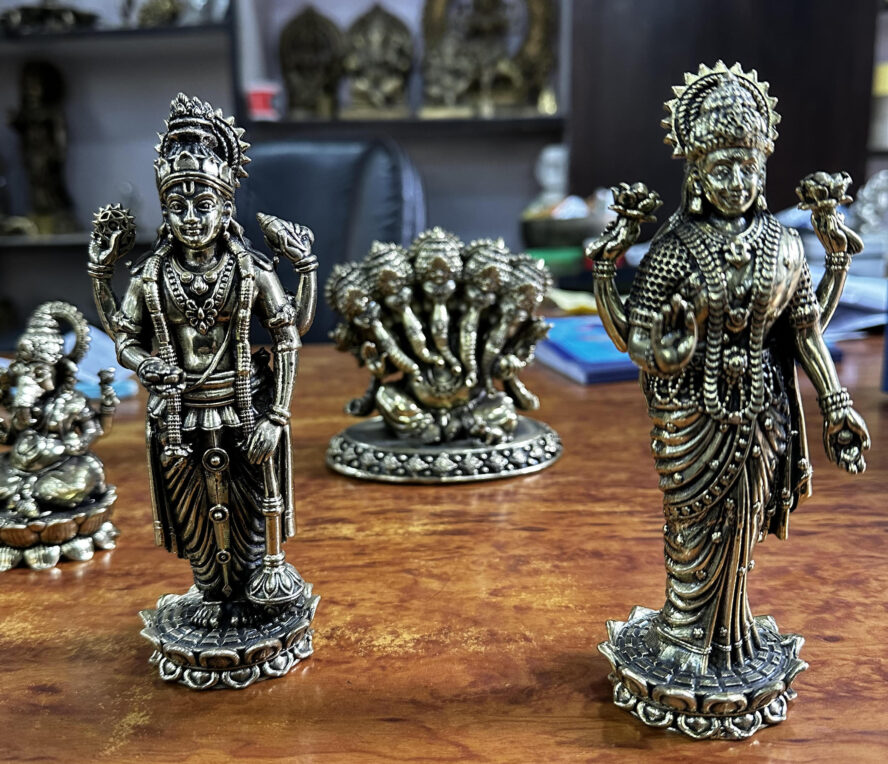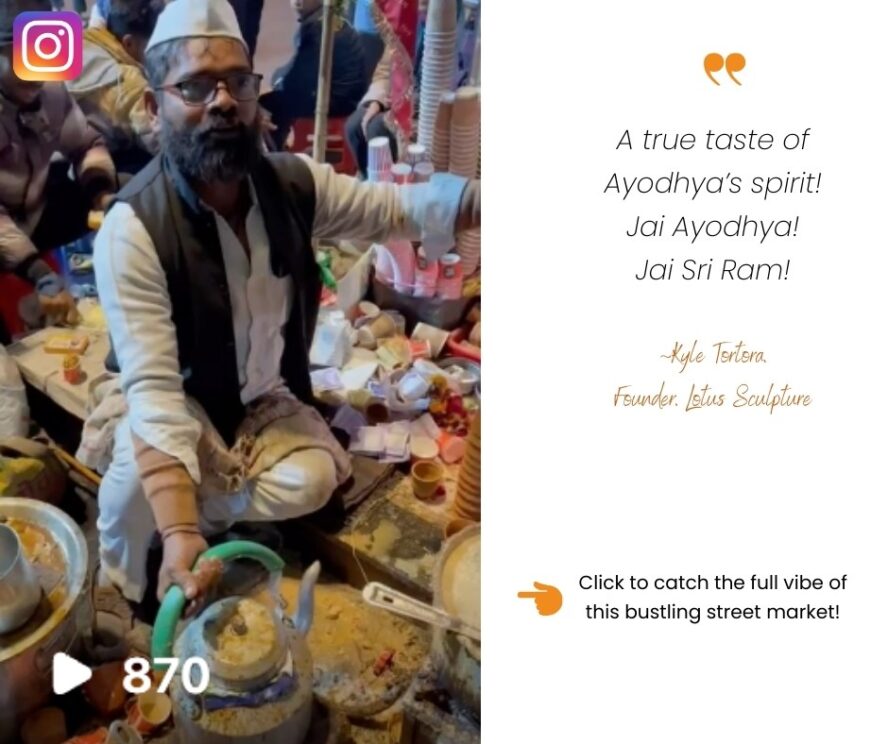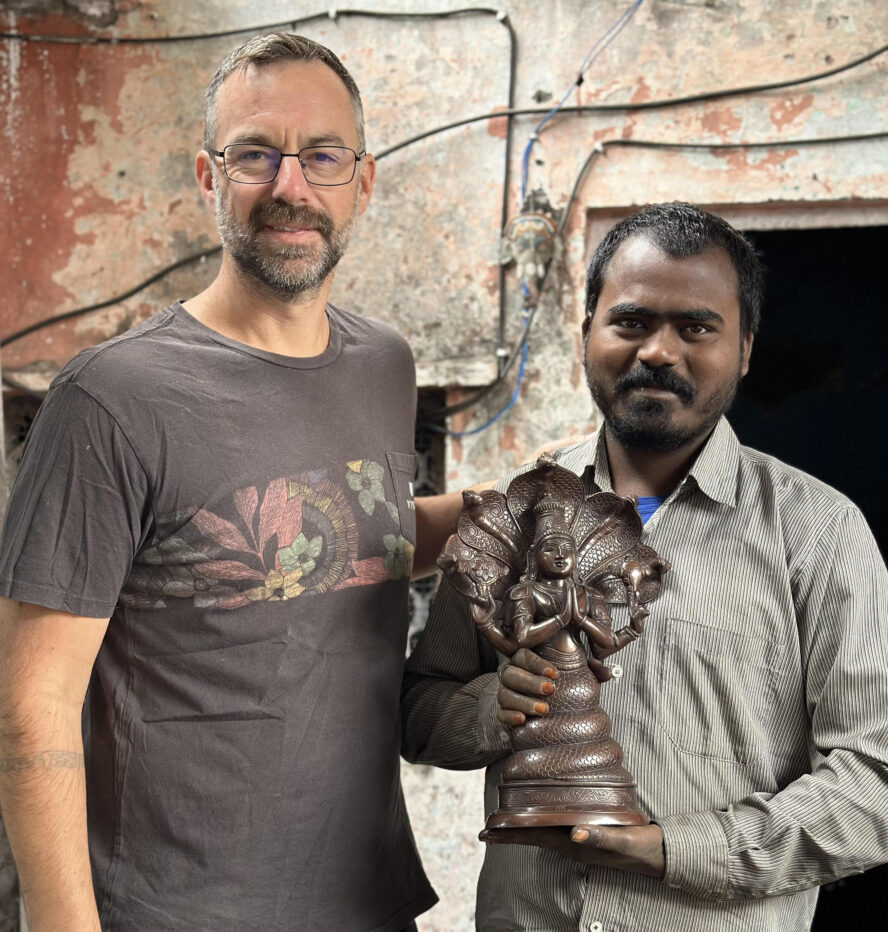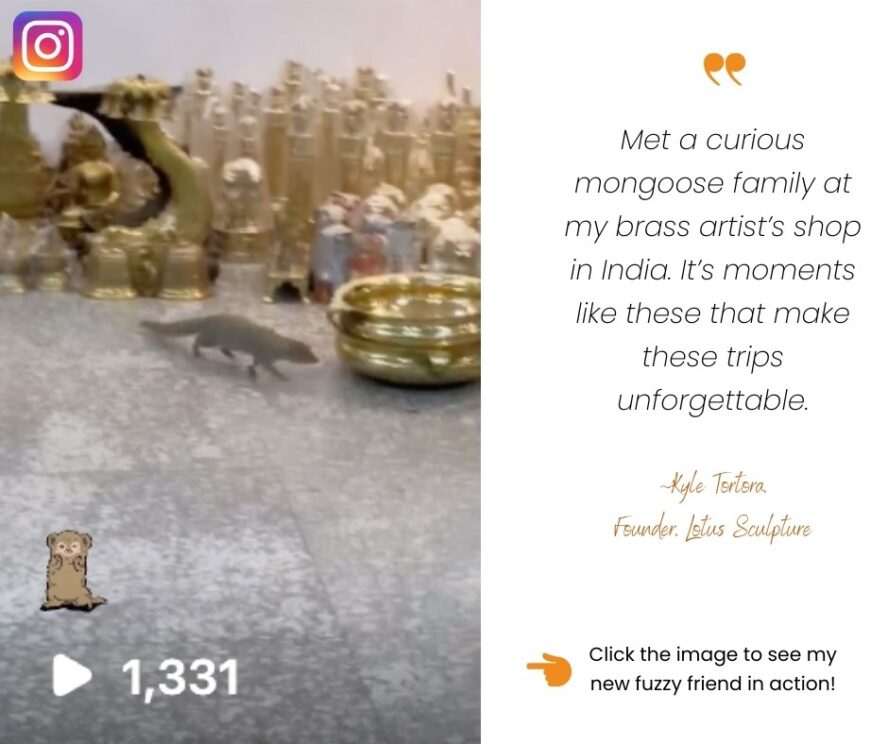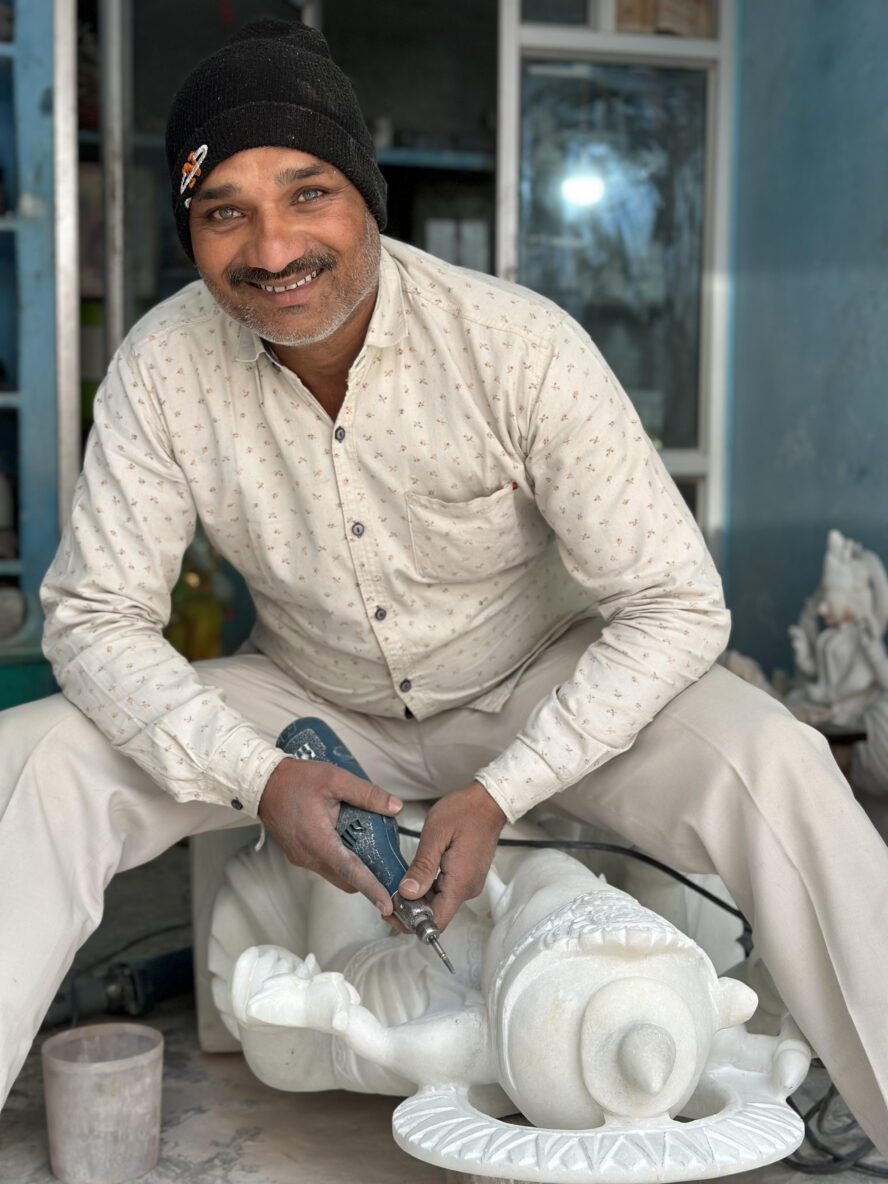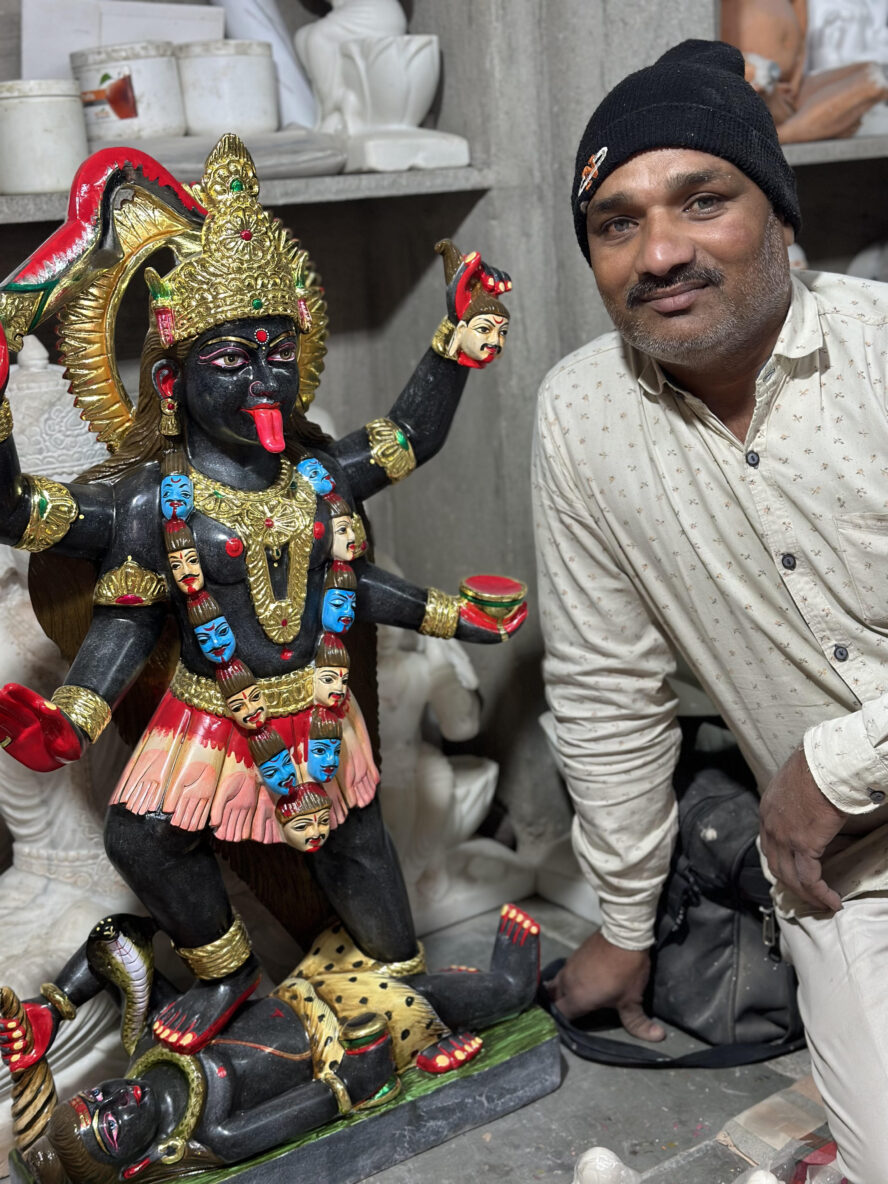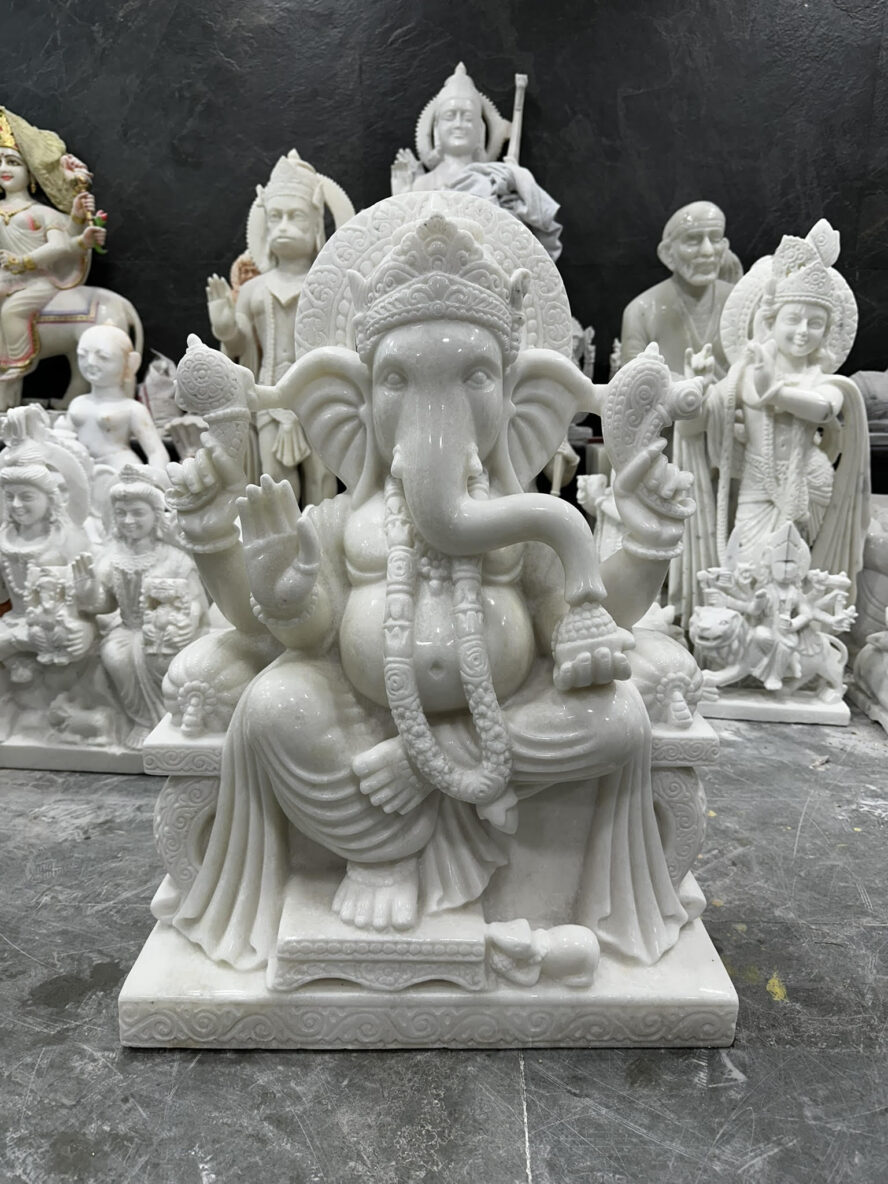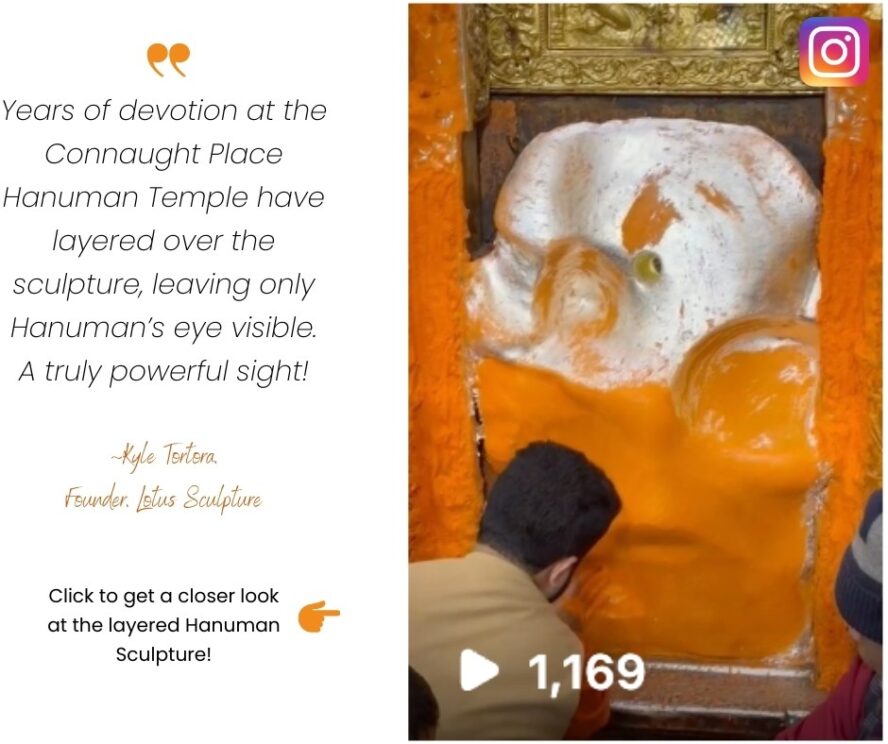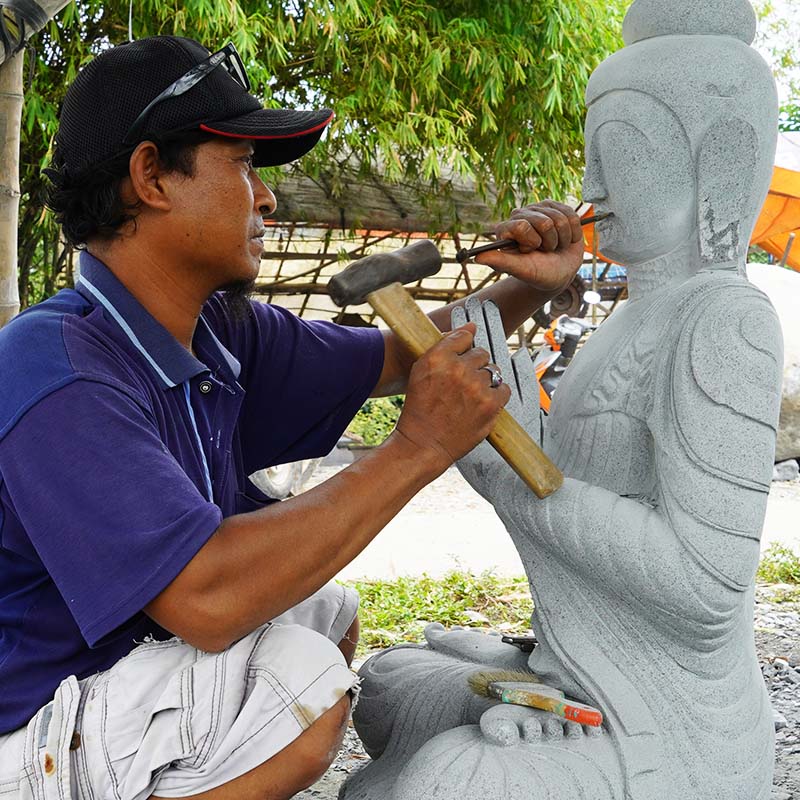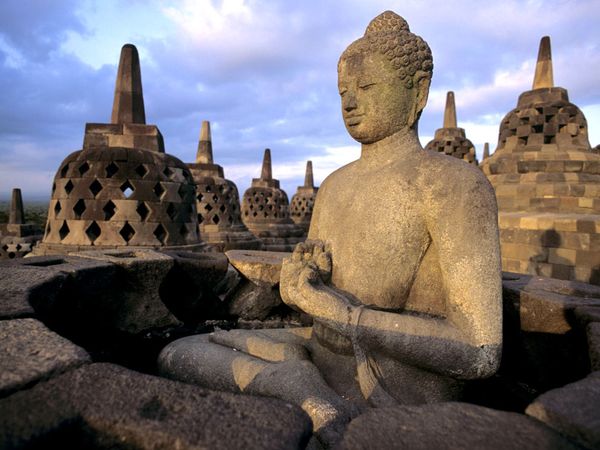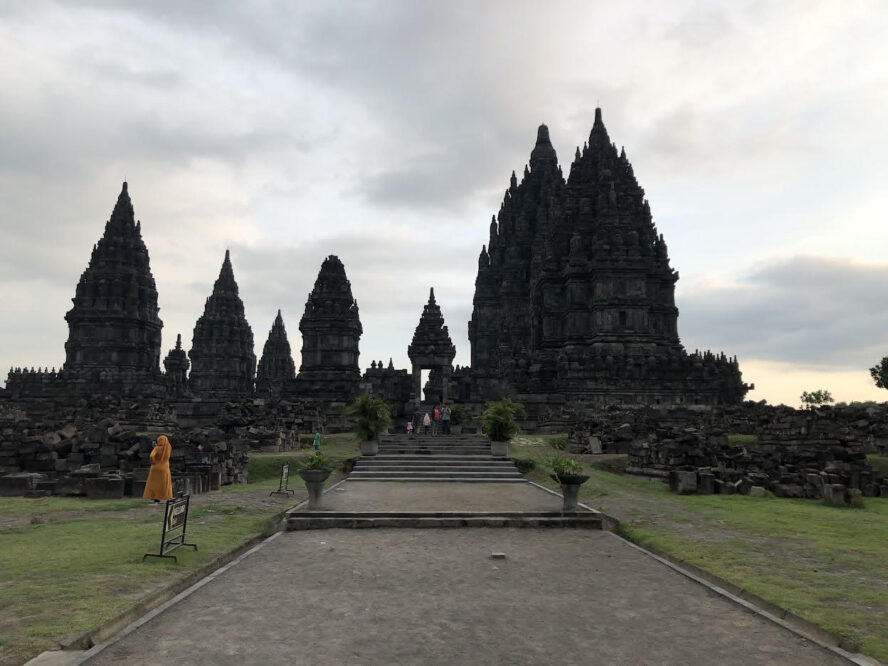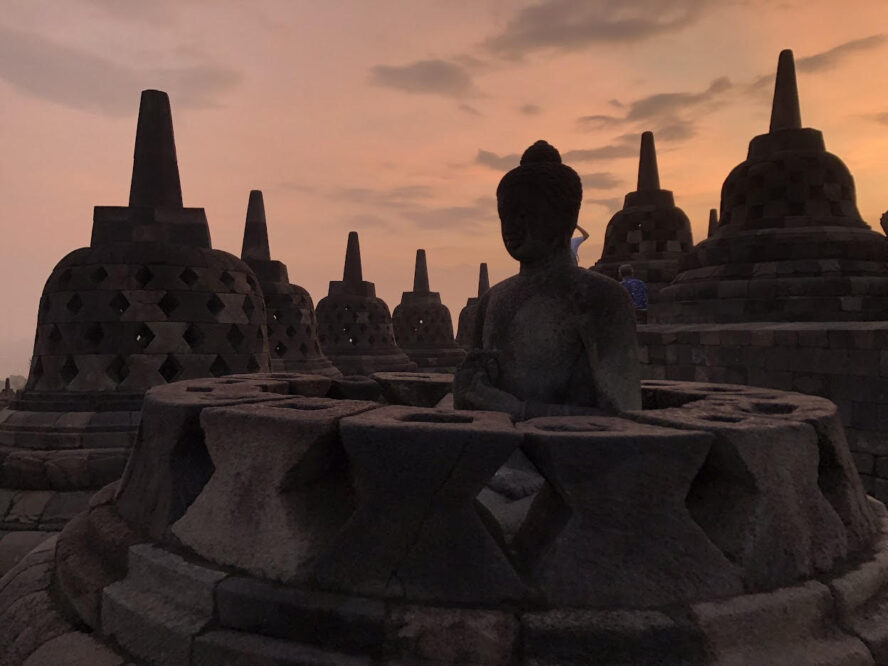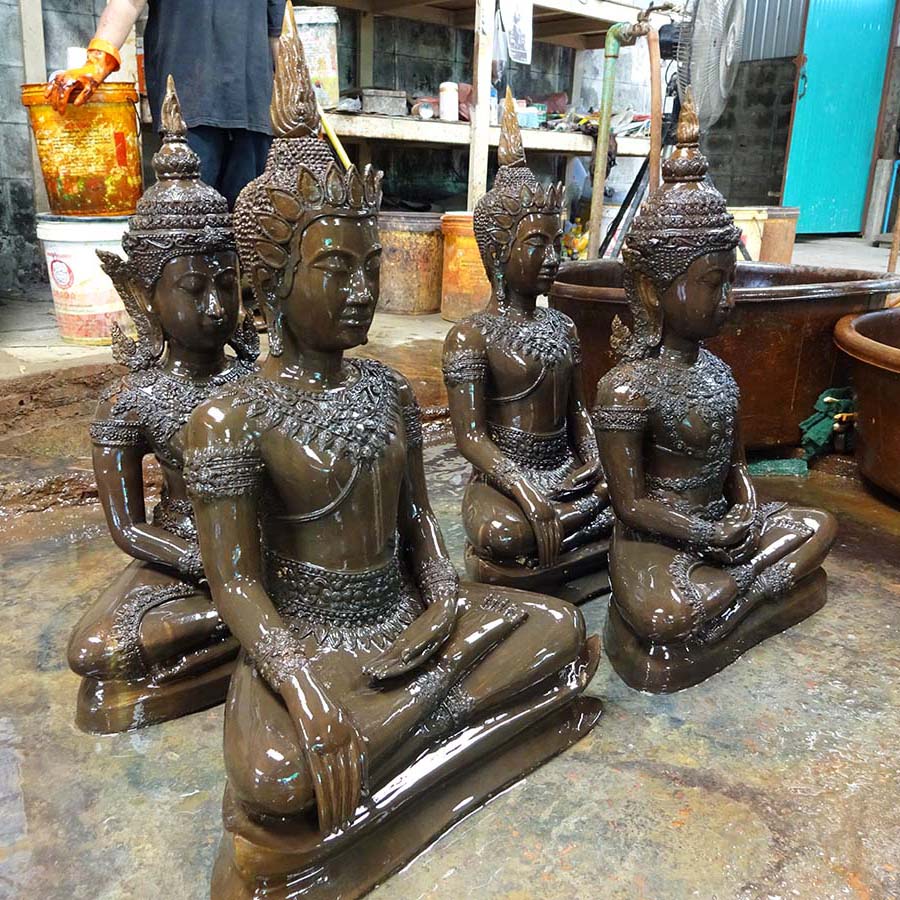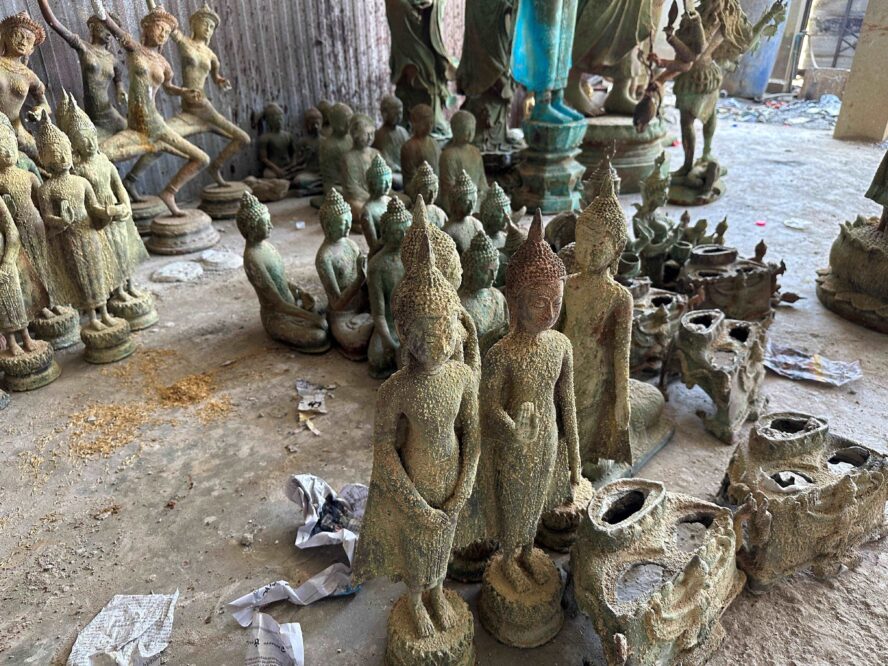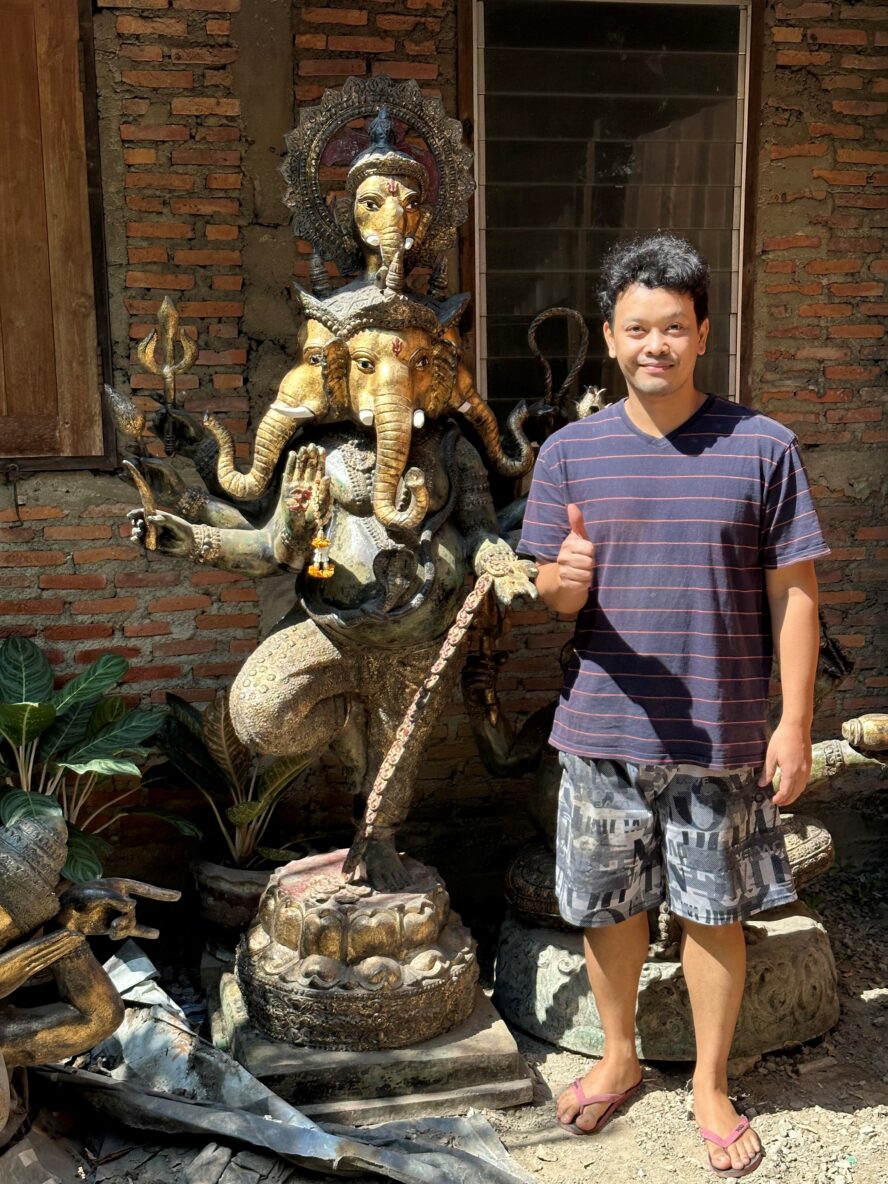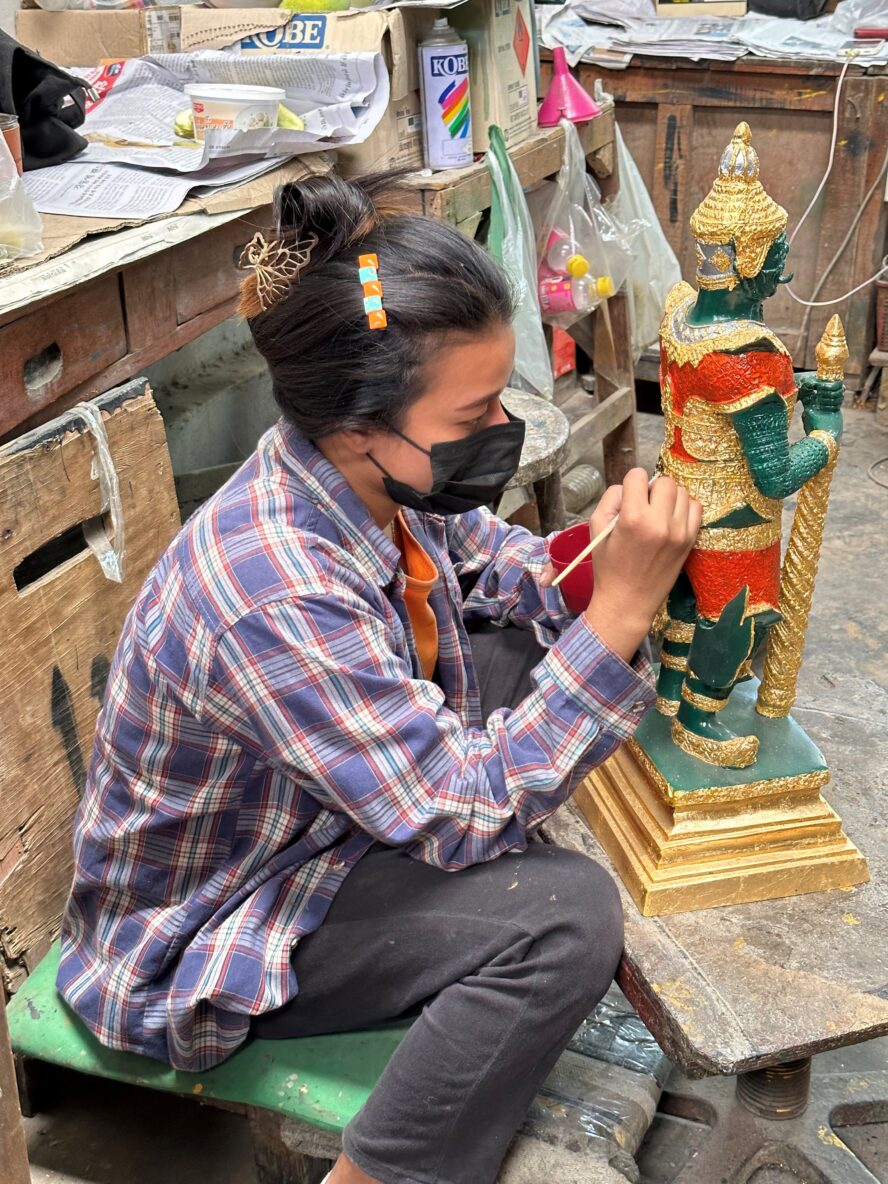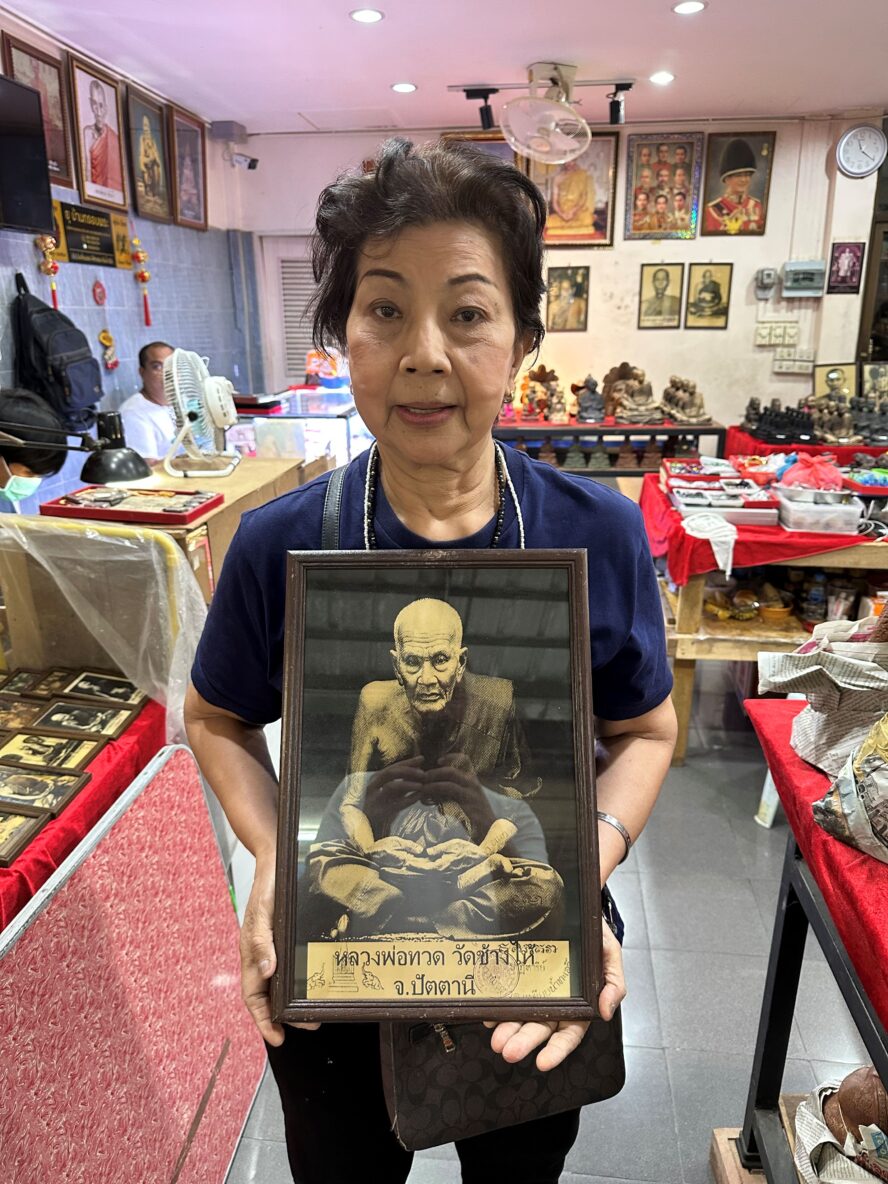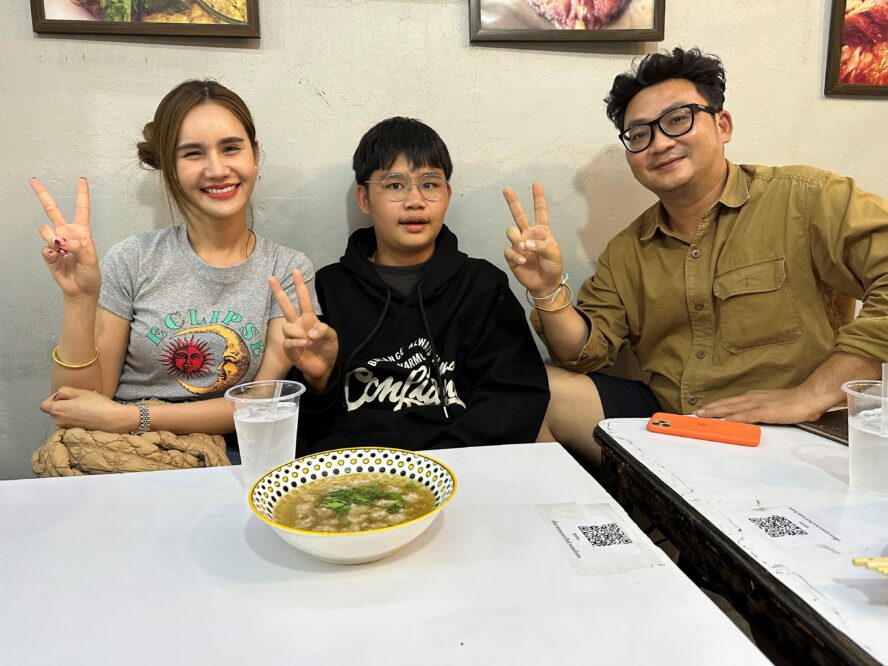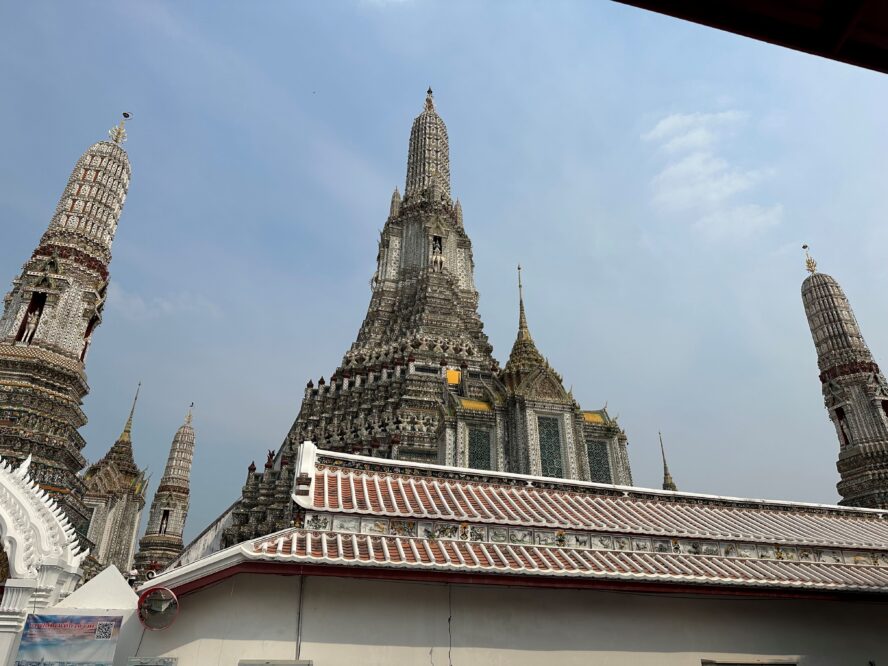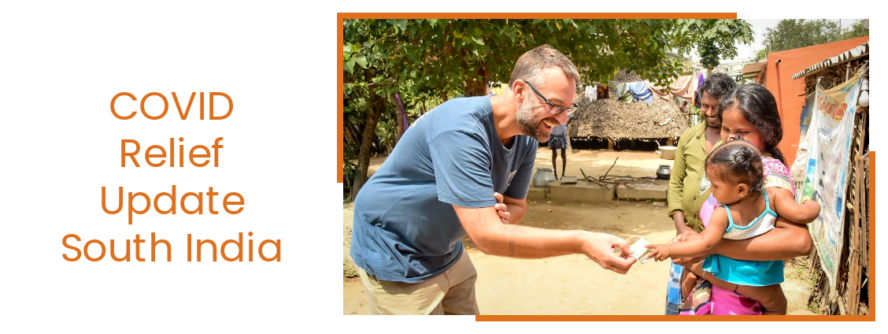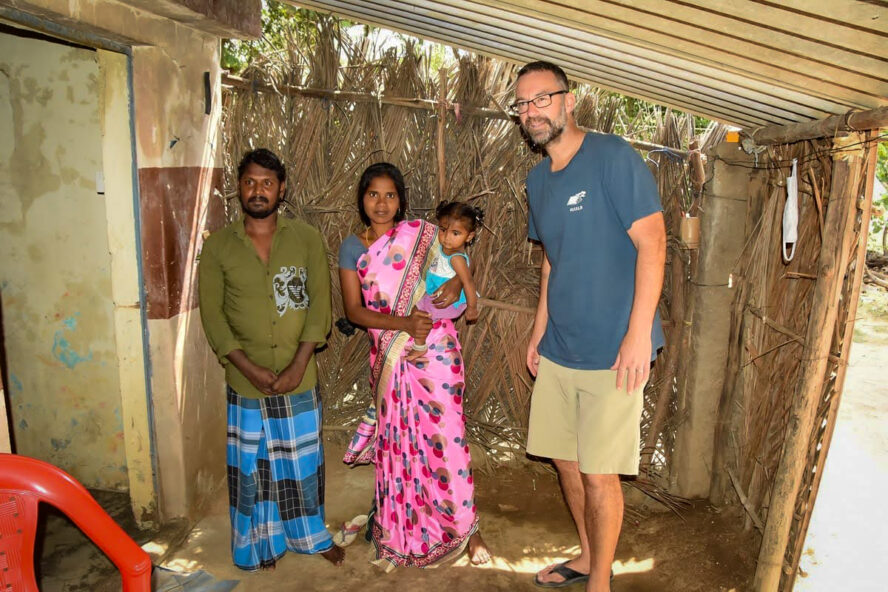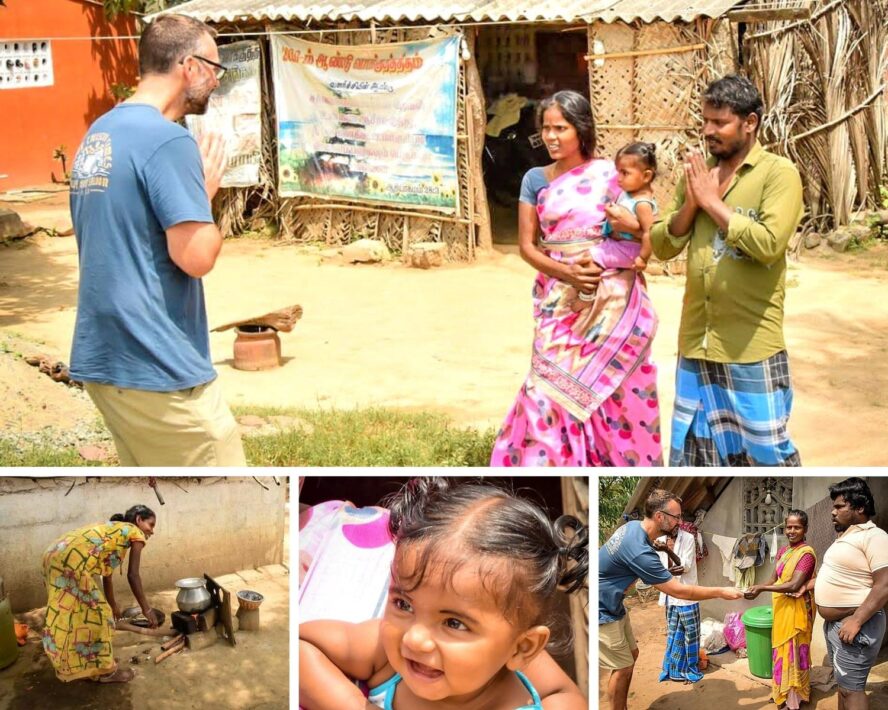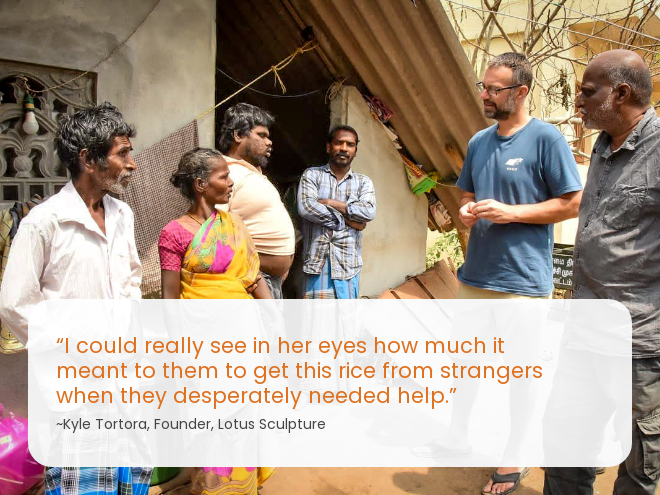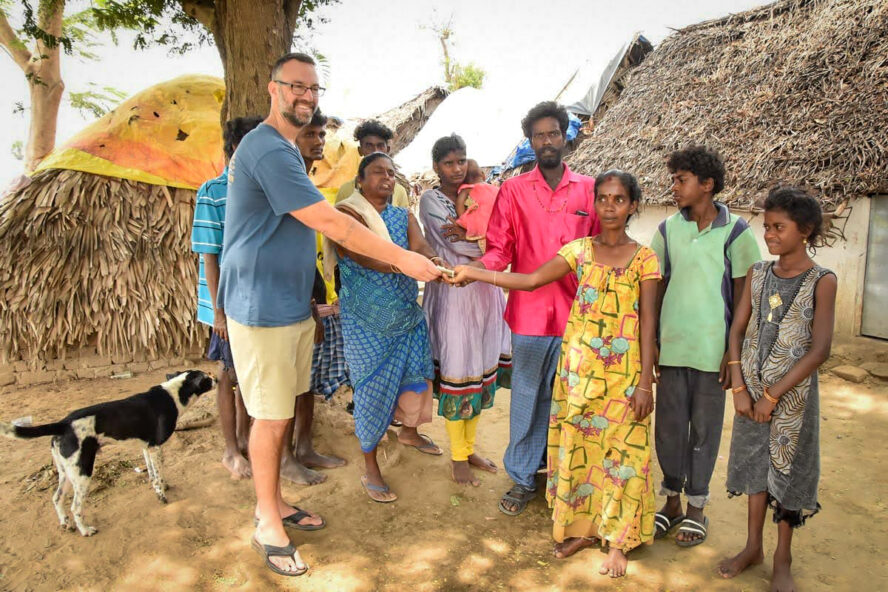
Every January, I embark on my journey to curate the stunning statues you’ll see on Lotus Sculpture throughout the year. This year’s journey takes me through the heart of India and Nepal, and yes, those are the majestic Himalayas I’m glimpsing from my window. The sight of these towering mountains is incredibly humbling!
I invite you to stay connected for weekly updates on my journey! I’ll be sending out newsletters, to sum up my adventures, and you can also follow along daily on Instagram for a more up-close and personal experience of my travels.
My trip began in Delhi, with my good friend Piyush, and I’ve already picked out some amazing new designs, like this Nandi, to add to our collection soon.
You have spoken and I have listened!
I’m very excited to share something new with you all! After hearing your requests for smaller murtis for home altars, I’ve found a fantastic range of brass and copper murtis, all 6 inches or smaller. It’s great to know I can bring exactly what you’ve been looking for to your sacred spaces. Your feedback is invaluable, and I’m thrilled to respond to your needs!


I had the chance to learn extensively about the coloring process of our brass murtis. Vijay, who manages the coloring, guided me through the entire procedure, giving me an insightful look into this intricate art form.
Check out the video below for a closer look at the process:
My visit to the showroom had a charming local twist when a mongoose curiously sniffed me, revealing that a mongoose family calls this place home. I was told by Carol on Instagram that “At least you’ll be safe from cobras!”
Thank you Carol but I am more worried about Delhi Belly than cobras at this point.
Check out the Instagram post below to meet my new mongoose friend:

Next, my journey took me to Jaipur, the heartland of India’s white marble craftsmanship. Here, I had the pleasure of meeting Ajaysharma and his brother, Vijay, in their quaint studio. Ajay is a master at carving intricate white marble statues, while Vijay brings them to life with his skillful painting. It’s a perfect blend of creativity and brotherly collaboration, truly capturing the essence of Jaipur’s artistic spirit.


I have managed to visit quite a few temples since I arrived. I just can’t get enough of the unique sights and sounds each one has to offer. It’s so cool to soak up all that energy – It really makes you feel part of something bigger.

I have just arrived in Nepal and am looking forward to exploring the narrow streets of Patan in search of more statues!


